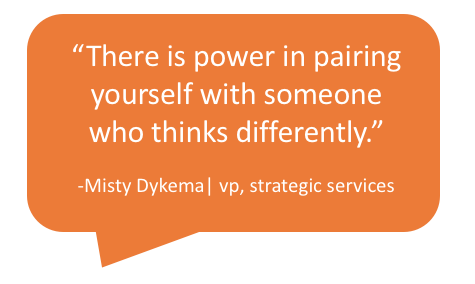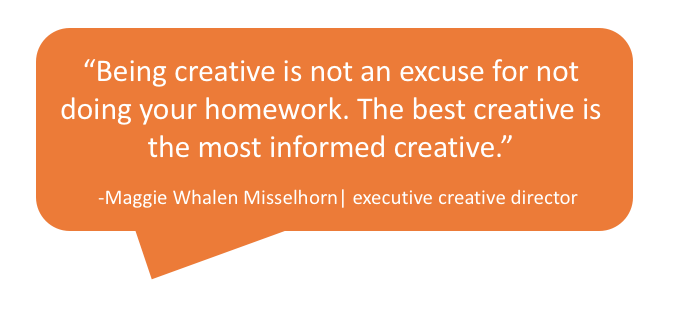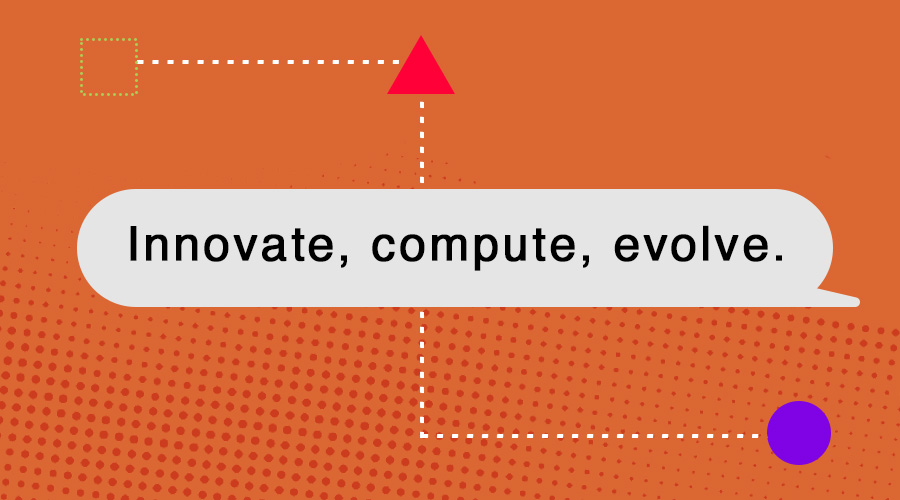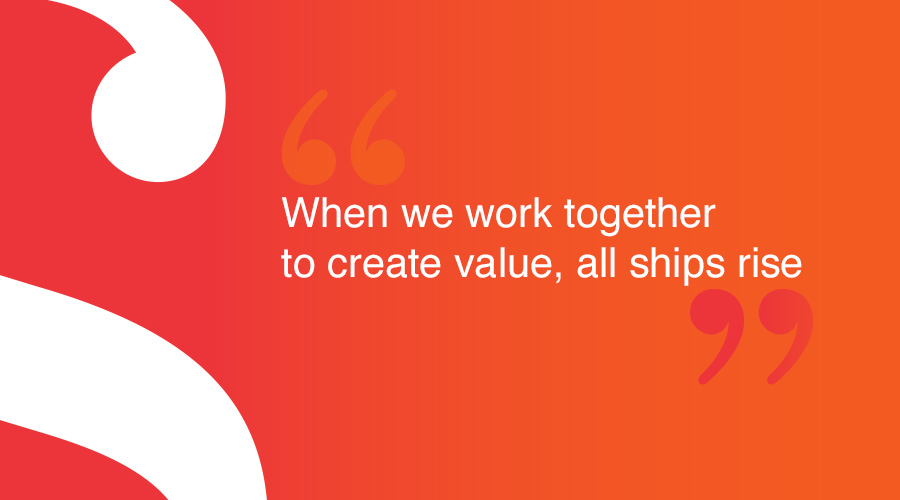Companies we partner with are developing and launching technical processes and products that are game-changers – and doing it faster than ever before. Many times, these solutions – and the messages are complicated. The catch? Collectively, our ability to comprehend the complex, technical information hasn’t advanced at the same rate as innovation. A recent article in the Harvard Business Review stated that “complex stories require different marketing approaches.” We couldn’t agree more.
So, what’s a marketer to do? Where is the “goldilocks” solution that achieves that “just right” blend of technical details and creative approach to result in a story that engages your audience, takes them on the journey from problem to solution and helps them see themselves as an integral part?
To get some answers, I sat down with Maggie Whalen Misselhorn, our Executive Creative Director, and Misty Klobucher, our VP of Strategic Services. Both come at this topic from unique perspectives, but each offers important considerations as we work to make technical topics more approachable.
Are “technical” and “creative” either/or qualities?
Maggie: There’s a misperception that creative is always entertaining, fun, artistic…and it certainly can be. But some of the most creative people I’ve met are engineers or other technically-minded people. There’s nothing more creative than developing a product or process that makes things better. For our creative team, creativity is about how we make that thought, process or product engaging to people. It’s a complex process to be creative when mapping out something highly technical.
How can a creative approach make a technical story more compelling?

Misty: As a researcher or technical expert, you can make data tell a lot of different stories. It’s all in the lens that you look through. We see the things we seek to find. It’s a form of confirmation bias. But sometimes the story that we see isn’t the most compelling one. That’s when we need someone to challenge that paradigm. Sometimes the logical story is more powerful when it’s flipped on its head. There is power in pairing yourself with someone who thinks differently.
Maggie: It’s understanding the marriage of logic and emotion. What we say has to connect with both the hearts and minds of your audience. For example, a pharmaceutical company was manufacturing a heart drug that was getting great results. But they needed more capital. When they went at it with just the facts – here’s the drug, its ingredients, how it’s made, how it works, etc. – they didn’t get the funding. But when they made a personal connection, showed how the results of this drug were important to them at a personal level, they set up the audience to see that “this could happen to me.” Creating that connection resulted in investors.
What about all the details that surface when we’re communicating technical topics?
Misty: Allow your technical subject matter experts to do what they do best. Write the story with all the details. Then it’s your time to edit, through your “people” lens. There are many different avenues to travel with data, and there will be some dark holes that you travel down with your technical experts. That’s okay. Take the journey. Remember that there is a time and a place for getting in the weeds. When I have the time and space to be analytical and look at numbers and data and processes, I can tell a more powerful story. For me, education around technical topics is actually a good thing when it leads to more powerful conversations.
Maggie: Technical experts don’t want to be slighted (I mean, come on, who does?), but many times there are unneeded transitions or details that will need to be eliminated or simplified when it comes time to tell that story. Data is telling you something but it doesn’t mean anything until it uncovers something unique. Keep asking why and keep going to the next layer until you get an answer that provides a unique approach. Take a step back and look at the topic through a different lens; this could uncover the most important information and help prioritize the details.
 The simplification of the complex is our job. That’s not just eliminating words or ideas. It’s about getting to the right ideas. It’s not about “dumbing it down” either. It’s about making it understandable, bringing the complex nature of it to life in a way that is consumable. Being creative is not an excuse for not doing your homework. The best creative is the most informed creative. And, many times, information is in the details.
The simplification of the complex is our job. That’s not just eliminating words or ideas. It’s about getting to the right ideas. It’s not about “dumbing it down” either. It’s about making it understandable, bringing the complex nature of it to life in a way that is consumable. Being creative is not an excuse for not doing your homework. The best creative is the most informed creative. And, many times, information is in the details.
How can we balance the needs of both technical and creative thinkers in a way that brings results?
Misty: Technical thinkers appreciate process. They want to know the requirements and the parameters that will lead them to the end. Creative thinkers tend to work best with no parameters – going to the solution right away. Parameters add to efficiency. They help groups put things into place. That’s why, for groups that come from opposite ends of the spectrum, there is power in the formulaic conversation that comes from a workshop model. Yes, it is process driven, but it drives a creative outcome. That’s where the magic happens. It requires both logical and creative thinking to put a story together in a cohesive way. A process can help to produce the big results – it’s consultative, but still allows for the big and shiny outcome.
What advice would you give to creative thinkers who are working with technical thinkers?
Misty: Balance being a storyteller with being brave and going into some hard concepts. Seek out the answers. Embrace a process, but also know when to break the process. Showing how you get to the outcome is a story – there is so much logic that goes into the process. And technical thinkers will appreciate it.
And, Maggie, what advice would you give to technical thinkers working with creative thinkers?
Maggie: What’s most important to you is not always what’s most important to your audience. Understand your audience as a person first. Then take them on a journey – and, remember, it’s not always the same as yours. Open your mind to letting the creative parts of you come out. You are part of the creative process that brings the technical story to life.
So, there it is. Bringing something highly technical to life requires vulnerability from all thinkers. When you accomplish this, that’s often when the magic happens.





